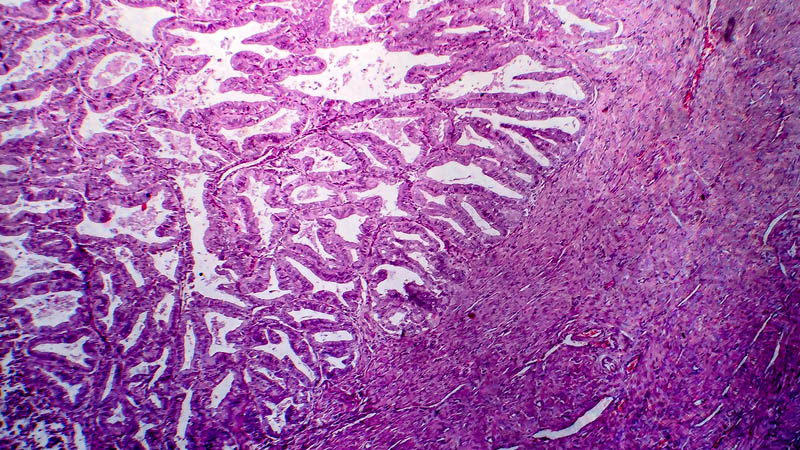Inguinal lymphadenectomy in case of vulvar carcinoma – point of view of a surgeon and a pathologist
Jerzy W. Mituś1,2, Joanna Wysocka3, Ewelina Kojs-Pasińska4, Jakub Kenig5, Andrzej Komorowski1, Wojciech M. Wysocki1, Zbigniew Kojs6
 Affiliacja i adres do korespondencji
Affiliacja i adres do korespondencjiVulvar carcinoma is the fourth most prevalent cancer of genitals in women (accounting for 5% of all neoplasms from this group). Histologically, we differentiate epithelial neoplasms – in 90% of cases we are dealing keratotic squamous cell carcinoma – and non-epithelial ones. The majority of vulvar carcinomas occur at a postmenopausal age and are related to chronic bacterial or viral infection (human papilloma virus). Lymph from the vulva is drained to three groups of inguinal lymph nodes and to iliac lymph nodes. Depending on the location of a neoplastic lesion, vulvar carcinoma metastasizes unilaterally or bilaterally. The basic methods of treatment are surgical removal or inguinal lymphadenectomy – both superficial and deep. This article presents a detailed anatomy of the inguinal-iliac lymphatic system as well as the most widely used surgical techniques and the most common postoperative complications. Cooperation with the clinician is crucial to present a valuable pathology report. In hospitals with an anatomic pathology unit on-site, the surgeon should send a non-fixed material, and optimally – in sterile conditions. In hospitals without an anatomic pathology unit, the specimen must be fixed. For the pathologist’s assessment of pN stage – in accordance with the TNM classification of 2010 – to be reliable, the operative specimen comprising the inguinal lymphatic system must include at least six lymph nodes. Obtaining satisfactory management results requires a good knowledge of anatomy of this area and surgical techniques as well as a proper preparation of the specimen for pathologic examination.









